How an itchy horse stops the flies torturing the belly line!
Posted by Rahmar Oberholtzer on 19th Mar 2021
The ins & outs and what we can do about it!
Anybody that has had a horse knows that horses love it when you scratch their bellies, there is a good reason for that, they can’t do it themselves! There is a lot to know about the challenges, and why & how an itchy horse stops the flies torturing the belly line, on their own, let’s solve that problem for them!
That said, the two biggest factors to regulate itching are: fly control and scratching.
Buddy System:
Wild equines that fight this war on flies commonly scratch and groom each other. It’s true that their social graces only allow them to go so far, but some do allow a buddy to reach the most private places. More commonly, they stand side by side tail whisking each other. An average length of tail can swipe between their own hind legs as far as the sheath or mammaries, as well as reach a portion of their closest buddy to keep the flies at bay.
Domesticated horses that get to live together practice these same behaviors, however some breeds have tail issues that prevent adequate fly abatement. Docked tails, cob tails, cut tails and extremely thin/short tails are common with a variety of breeds. There are also paralyzed tails caused from neglect, accident, or sickness. Braided tails too are poor tools against flies, damaged tails from Sweet Itch, a hung-up braid that gets pulled out or just falls out from follicle damage all impair the ability to keep flies off the tummy.

Fermin Rodriguez ©
Standing In Water:
Lots of horses like water and wild horses use bodies of water and creek pools to stay cool or just to get a bit of relief from the flies, submerging the belly in water makes it and the legs temporarily inaccessible to insects. The domesticated ones that are lucky enough to have a body of water at hoof can use the relief as well as a feral. Some horses will even resort to standing in a water trough for the relief. This helps with flies but not the itch.

Artur Baboev ©
Smaller puddles or large pools of standing water are a great place to paw and splash water enough to temporarily scare flies from under the horse and off the legs. The quest to dig out a water source and a little playing with the water puddles teaches this to them, and the water contact to the abdomen touches the itch sensation just enough for a rare comforting contact underneath. The right puddle will prompt a good roll for the cooling water or the mud coating to help build a shield from flies.
Dusting:
A good roll will scratch only 80% ± of the horse’s body, but not their belly. Just like standing water, a thick pad of dirt or dust roll site gives a horse a place to kick up dirt to their underside.
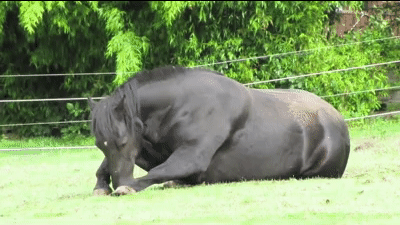
Laurie Munsell ©
Ventral rubbing on the ground:
Laying ventrally, some horses learn to undulate and scrape the belly against the ground. However well this motion works on the sternum, the belly line to the groin is left completely without contact. Many older arthritic horses have trouble with this method, just getting up and down multiple times a day creates unwanted pains they would rather avoid.

Shannon Fornari ©
Fly Sheets:
Fly sheets and rugs protect that same 80% ± of the horse’s upper body and sides leaving the underside unprotected. Besides the face and neck areas there are extensions to fly sheets that go under a portion of the midline, but again cannot cover the sheath/mammary area for obvious reasons of hygiene. The cons here are some horses will not wear the belly cover or they will often damage it trying to scratch that open sheath/mammary area.
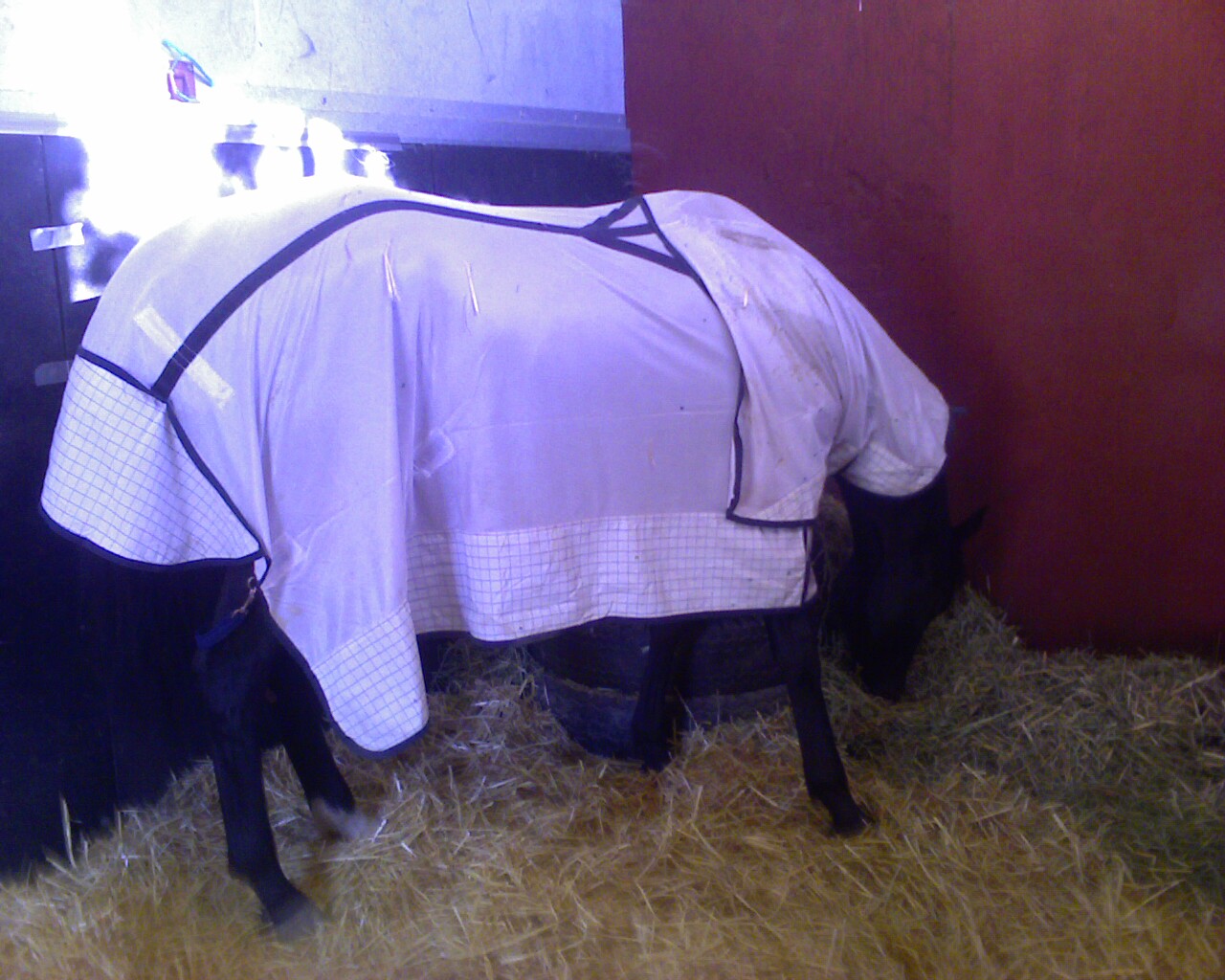
Stalling:
During peak fly activity, putting horses in barns or stalls that have active fly control systems, minimizes all fly biting areas on the horse, but even with horse stall scratchers this does not address the itching tummy.

Charlotte Godfrey ©
Tools/Random objects:
We have all seen the special ways horses find to scratch their bellies. I have witnessed them using feeders, wheelbarrows, boulders, blackberry patches, bushes, and trees. Videos abound of them scratching on cars, cow horns, and stumps, all of which can be dangerous and costly.
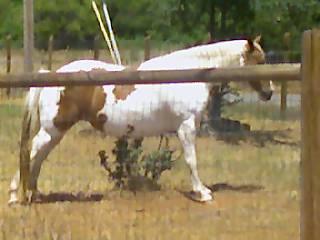
Outside horses seeking relief with horse scratching posts and fences are great for that 80% ± of the body (not great for fences) but it is usually over done because they are aggressively trying to overcome the itch sensation they can’t get to and make go away. This is why they start the extreme tail damaging snowball effect. Scratching the top of the tail, damage to the hair, which invites biting flies, then an allergic reaction is followed by itching, and the process grows making larger and larger patches of itchy horse. This is Sweet Itch in action!
The importance of it all:
Scratching is a result of the itching from several causes, aside from ailments and shedding, mostly it is brought on by biting insects that cause an allergic reaction. They attack vulnerable areas of skin and the severity can increase without intervention.
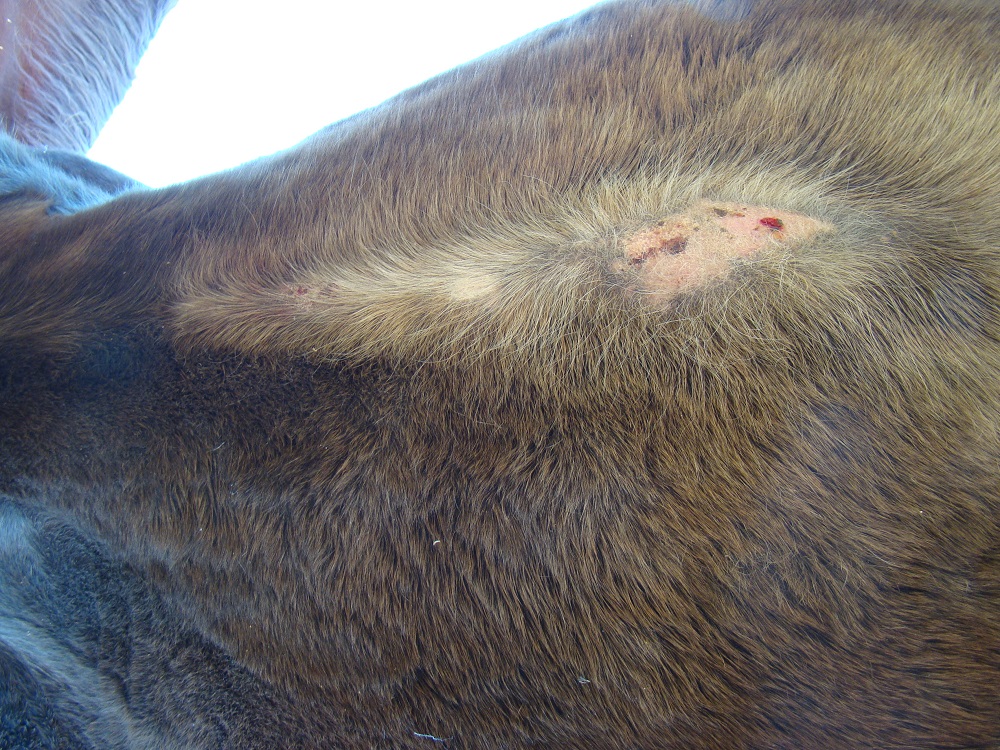
The midline from the belly button towards the sternum has a long cowlick or multiple swirls of thin hair that point away from a center point of exposed skin, but the ventral groin area on the equine is the most challenging area a horse has to maintain. Hard to reach, thin, exposed, sweaty, hairless skin that is never covered attracts biting insects of all types, mosquitoes and biting midges are the worst.
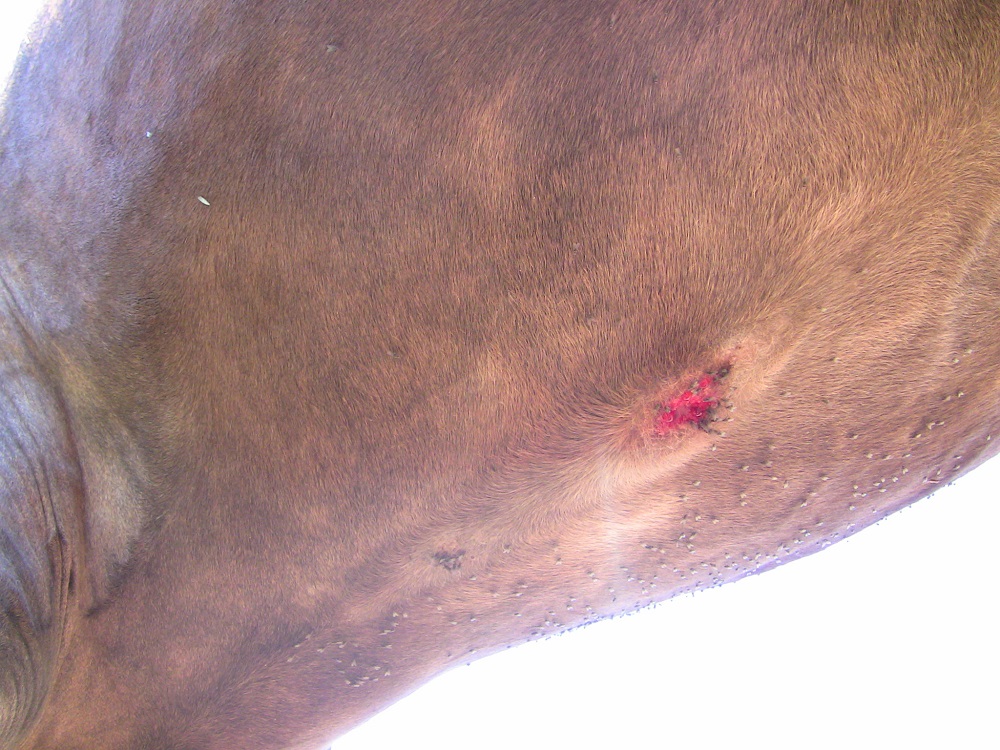
Equine Encephalomyelitis viruses (EEV) and Equine Infectious Anemia, or EIA are transmitted through mosquito bites and Biting Midge flies (Culicoides) cause the growing problem of Sweet Itch (Seasonal Recurrent Dermatitis (SSRD) or Equine Insect Bite Hypersensitivity (IBH)), causes allergic reaction and severe itching (pruritus) that if not stopped can escalate to open sores. Those scabs that fall off to open sores as well as the condition of Summer Sores (habronemiasis) invite nonbiting flies to introduce bacteria like Pigeon Fever (Corynebacterium pseudotuberculosis) , All of these problems can be severe or even fatal. Summer Sores are a different mechanism but cause intense itching as well. Shedding, dry skin, or dermatitis from bacterial or fungal infection, all cause itching, this is why we see them scratch so much. and they should be allowed to. One exploratory pilot study with horse owners and Veterinarians stated “Overall, attitudes towards IBH suggested that the condition is a notable welfare and economic concern for stakeholders”.
It is fairly obvious to horse owners that the belly line on the horse is the most challenging area to control flies and also the most difficult area for the horse itself to scratch or abate flies.

credit; Harley Horsebliss
What can we do about the belly itch?
It is an uncommon concept to think that we can solve this issue for the horse. We all do our best with chemicals, antihistamine, and scratchers to relieve the horses’ itching, but are limited as to what we can do about relief on the belly line, however, added attention to animal welfare is so important because we keep our animals from their natural habitat denying them many of the tools and space they need for a fulfilled life. Horses living in un-natural or barren environments are stressed enough to negatively change their behavior, unwanted vices develop, and research shows that horses with vices have subdued learning abilities. Inability to scratch an itch is as miserable as boredom, and this unpleasant emotional state is considered suffering. Researcher Marian Stamp Dawkins states it best, “Captive animals often suffer in situations in which they are prevented from doing something that they are highly motivated to do”
The best treatment for things like Sweet Itch in horses is to avoid it as much as possible. Likewise, giving them access and tools to perform a naturally developed behavior of scratching not only comforts them but never materializes the countless stresses that you as a caretaker can suffer. The Effect of environmental enrichment devices on behavior is very well researched and practiced in the cattle/dairy industry and can be applied to equines as well.
You can see why we spent years stressing about this challenge and ended up solving it with the BellyBrush. From a horse’s perspective this tool gives new meaning to having the ultimate belly brush. Giving horses the ability to scratch and whisk away flies is extremely important for equine mental health, and in a domesticated setting we must introduce useful tactile enrichment alternatives to their living environment to mimic as natural a habitat as much as possible. Addressing an itchy equine belly on our companion horse is the last itchy real estate to conquer and because of its importance, a product solution should be considered a primary environmental enrichment tool, that’s just good management!
Resources:
Access to helpful research links
Climate Change: Effects on Culicoides-Transmitted Viruses and Implications for the UK: Veterinary Journal.
A pilot qualitative investigation of stakeholders' experiences and opinions of equine insect bite hypersensitivity in England: Department of Animal Production, Welfare and Veterinary Sciences, Harper Adams University
Stereotypic behavior in cattle, pigs and horses-a review; Animal Science Papers and Reports
Lower learning abilities in stereotypic horses; Applied Animal Behaviour Science
From an animal's point of view: Motivation, fitness, and animal welfare; Behavioral and Brain Sciences.
Effect of environmental enrichment devices on behavior of individually housed beef heifers; Translational Animal Science, Oxford University.


